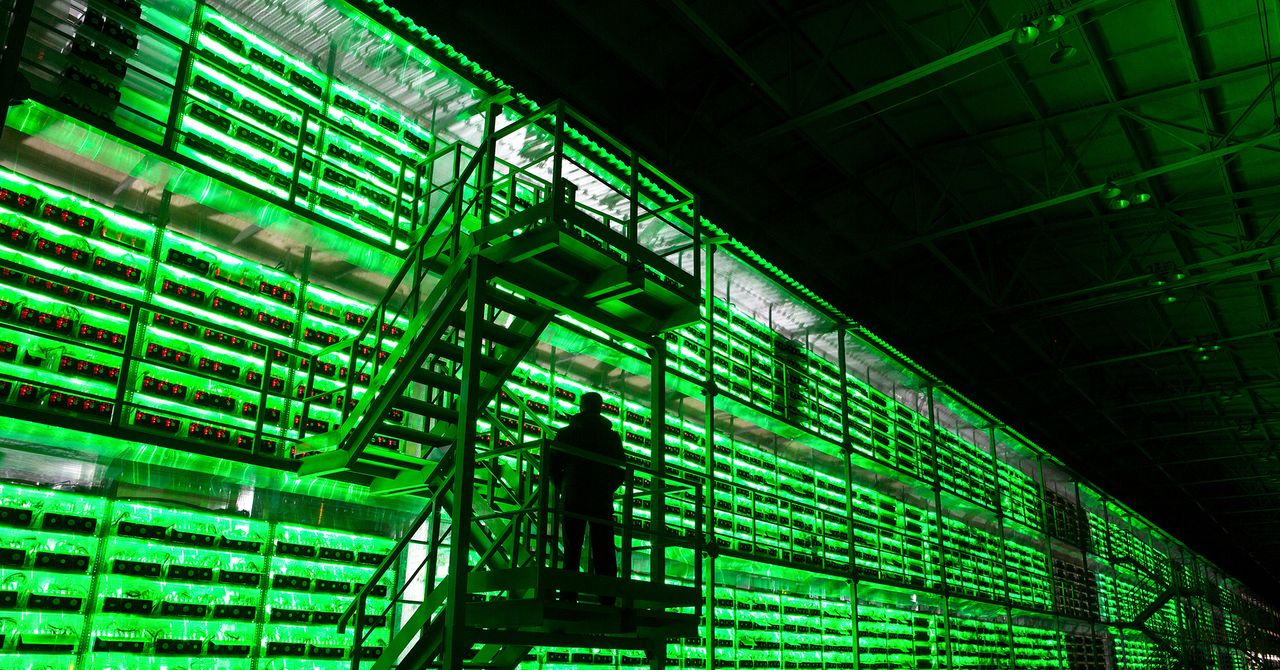Understanding The Recent Surge In Bitcoin Mining Power

Table of Contents
The Role of Institutional Investment in Bitcoin Mining Power
Increased institutional interest is a major catalyst behind the recent surge in Bitcoin mining power. Large-scale mining operations, often backed by venture capital firms and established corporations, possess the resources to deploy significant mining capacity, dramatically increasing the overall hash rate.
- Increased access to capital for large-scale mining farms: Institutional investors provide the substantial capital necessary for building and operating massive mining facilities, acquiring advanced hardware, and managing operational costs. This influx of capital allows for economies of scale, significantly boosting mining power.
- Development of more efficient and sophisticated mining hardware: Institutional investors often fund the research and development of more efficient mining hardware, leading to increased hash rates and reduced energy consumption. This technological edge provides a competitive advantage in the mining landscape.
- Strategic investments by corporations diversifying their portfolios: Many corporations are adding Bitcoin mining to their investment strategies as a means of diversification and exposure to the growing cryptocurrency market. This strategic allocation of resources contributes significantly to the overall hash rate.
Further details: Companies like Riot Platforms and Marathon Digital Holdings are prime examples of publicly traded companies making significant investments in Bitcoin mining infrastructure. Their expansion directly impacts the hash rate, contributing to the overall increase in Bitcoin mining power. This institutional involvement, while boosting the network's security, also raises concerns about centralization if a few powerful entities control a disproportionate share of the mining power.
Technological Advancements in Bitcoin Mining Hardware
Advances in Application-Specific Integrated Circuit (ASIC) technology are revolutionizing Bitcoin mining. More powerful and energy-efficient ASICs allow miners to process more transactions and earn more Bitcoin, driving the increase in overall Bitcoin mining power.
- Improved chip design leading to higher hash rates: Continuous innovation in ASIC chip design results in hardware capable of significantly higher hashing power, allowing miners to solve complex cryptographic problems faster and more efficiently.
- Lower energy consumption per unit of hashing power: New ASICs are becoming increasingly energy-efficient, reducing operational costs and making Bitcoin mining more profitable, even in regions with higher energy prices. This improved efficiency contributes to both the profitability and expansion of mining operations.
- Increased competition driving innovation in ASIC manufacturing: The competitive nature of the ASIC market fosters continuous innovation, resulting in a cycle of improved performance and efficiency, further pushing the boundaries of Bitcoin mining power.
Further details: The release of new ASIC miners from manufacturers like Bitmain and MicroBT regularly pushes the hash rate higher. These advancements, however, also raise questions regarding the accessibility of Bitcoin mining for smaller, independent miners who may struggle to compete with larger operations possessing access to the latest and most efficient hardware.
The Impact of Regulatory Changes on Bitcoin Mining Activity
Regulatory landscapes are constantly evolving, significantly influencing where Bitcoin mining operations are established. Some jurisdictions are becoming more miner-friendly, attracting significant mining operations and boosting the global hash rate.
- Favorable regulatory environments attract miners seeking lower energy costs and fewer restrictions: Regions with supportive regulations, tax incentives, and access to cheap renewable energy are becoming hotspots for Bitcoin mining.
- Changes in tax policies influence the profitability of Bitcoin mining: Tax policies play a crucial role in determining the profitability of Bitcoin mining. Favorable tax treatments can incentivize investment and expansion within a jurisdiction.
- Government support for renewable energy sources impacting mining location choices: Governments promoting renewable energy sources are attracting environmentally conscious mining operations, further contributing to the decentralization and sustainability of the Bitcoin network.
Further details: Countries like Kazakhstan, the United States (certain states), and some regions in Central America are examples of jurisdictions actively courting Bitcoin miners with favorable regulatory environments and energy resources. However, the concentration of mining in specific regions raises concerns about geographic centralization and potential vulnerabilities.
The Geopolitical Landscape and Bitcoin Mining
The global political climate exerts a substantial influence on Bitcoin mining activity. Geopolitical instability in certain regions can lead miners to seek safer and more stable locations, impacting the distribution of mining power globally.
- Political stability and economic certainty are crucial factors for large-scale operations: Large-scale mining requires long-term planning and significant investment, making political and economic stability crucial factors in location decisions.
- Energy costs and infrastructure availability heavily influence location decisions: Access to affordable and reliable energy sources, along with robust infrastructure, are paramount for the success of Bitcoin mining operations.
- Government policies and regulations play a significant role in attracting or deterring miners: Clear and consistent government policies regarding cryptocurrency mining are crucial for attracting investment and fostering a thriving mining ecosystem.
Further details: Recent geopolitical events, such as increased regulatory scrutiny in certain countries, have prompted miners to relocate their operations to more favorable jurisdictions, impacting the global distribution of Bitcoin mining power and hash rate.
Conclusion
The recent surge in Bitcoin mining power is a complex phenomenon driven by a confluence of factors: substantial institutional investment, continuous technological advancements in mining hardware, and the evolving regulatory landscape. Understanding these intertwined forces is crucial for grasping the future trajectory of the Bitcoin network and its capacity for decentralized operation. The increased mining power undoubtedly contributes to a more secure and resilient Bitcoin ecosystem, making it more resistant to attacks. However, maintaining a balance between security and decentralization remains an ongoing challenge. Staying informed about the ongoing developments in Bitcoin mining power is essential for anyone involved in or interested in the cryptocurrency market. Continue learning about the factors influencing Bitcoin mining power to make informed decisions and navigate this dynamic sector effectively.

Featured Posts
-
 Massive Whistleblower Payout Credit Suisse Settles For 150 Million
May 09, 2025
Massive Whistleblower Payout Credit Suisse Settles For 150 Million
May 09, 2025 -
 23
May 09, 2025
23
May 09, 2025 -
 Bekam Analiza Na Negovata Kariera I Dominatsi A
May 09, 2025
Bekam Analiza Na Negovata Kariera I Dominatsi A
May 09, 2025 -
 Warren Buffetts Canadian Successor A Billionaire Without Many Berkshire Hathaway Shares
May 09, 2025
Warren Buffetts Canadian Successor A Billionaire Without Many Berkshire Hathaway Shares
May 09, 2025 -
 Psg Formacioni Me I Forte Ne Gjysmefinalet E Liges Se Kampioneve
May 09, 2025
Psg Formacioni Me I Forte Ne Gjysmefinalet E Liges Se Kampioneve
May 09, 2025
Latest Posts
-
 Analysis Attorney Generals Fentanyl Demonstration And Its Impact
May 09, 2025
Analysis Attorney Generals Fentanyl Demonstration And Its Impact
May 09, 2025 -
 Fake Fentanyl Prop Attorney Generals Demonstration Sparks Debate
May 09, 2025
Fake Fentanyl Prop Attorney Generals Demonstration Sparks Debate
May 09, 2025 -
 Attorney Generals Fentanyl Display A Deep Dive Into The Implications
May 09, 2025
Attorney Generals Fentanyl Display A Deep Dive Into The Implications
May 09, 2025 -
 Chinas Canola Imports Beyond Canada New Partnerships And Sources
May 09, 2025
Chinas Canola Imports Beyond Canada New Partnerships And Sources
May 09, 2025 -
 Why Is The Us Attorney General On Fox News Every Day A More Important Question Than Epstein
May 09, 2025
Why Is The Us Attorney General On Fox News Every Day A More Important Question Than Epstein
May 09, 2025
